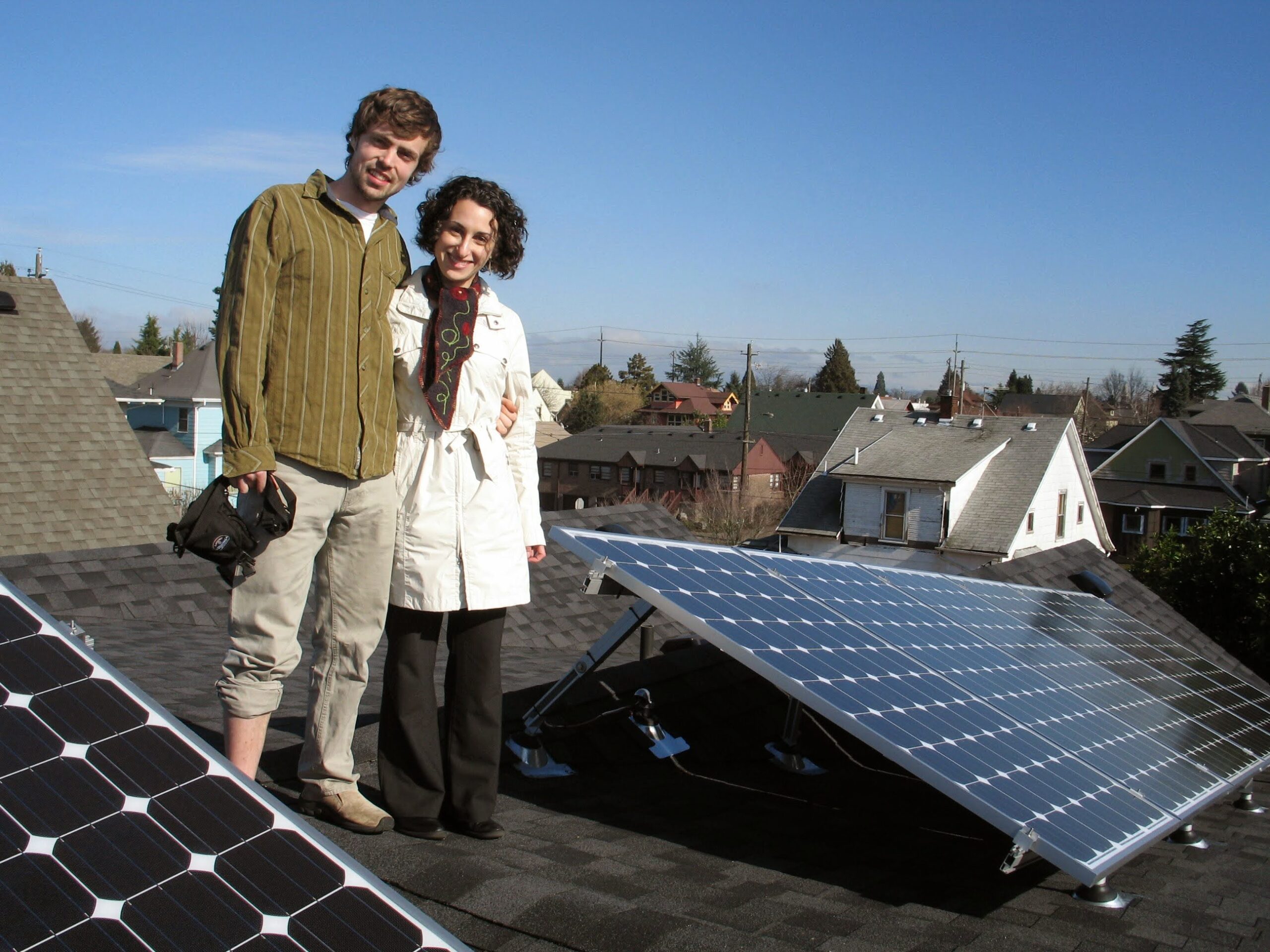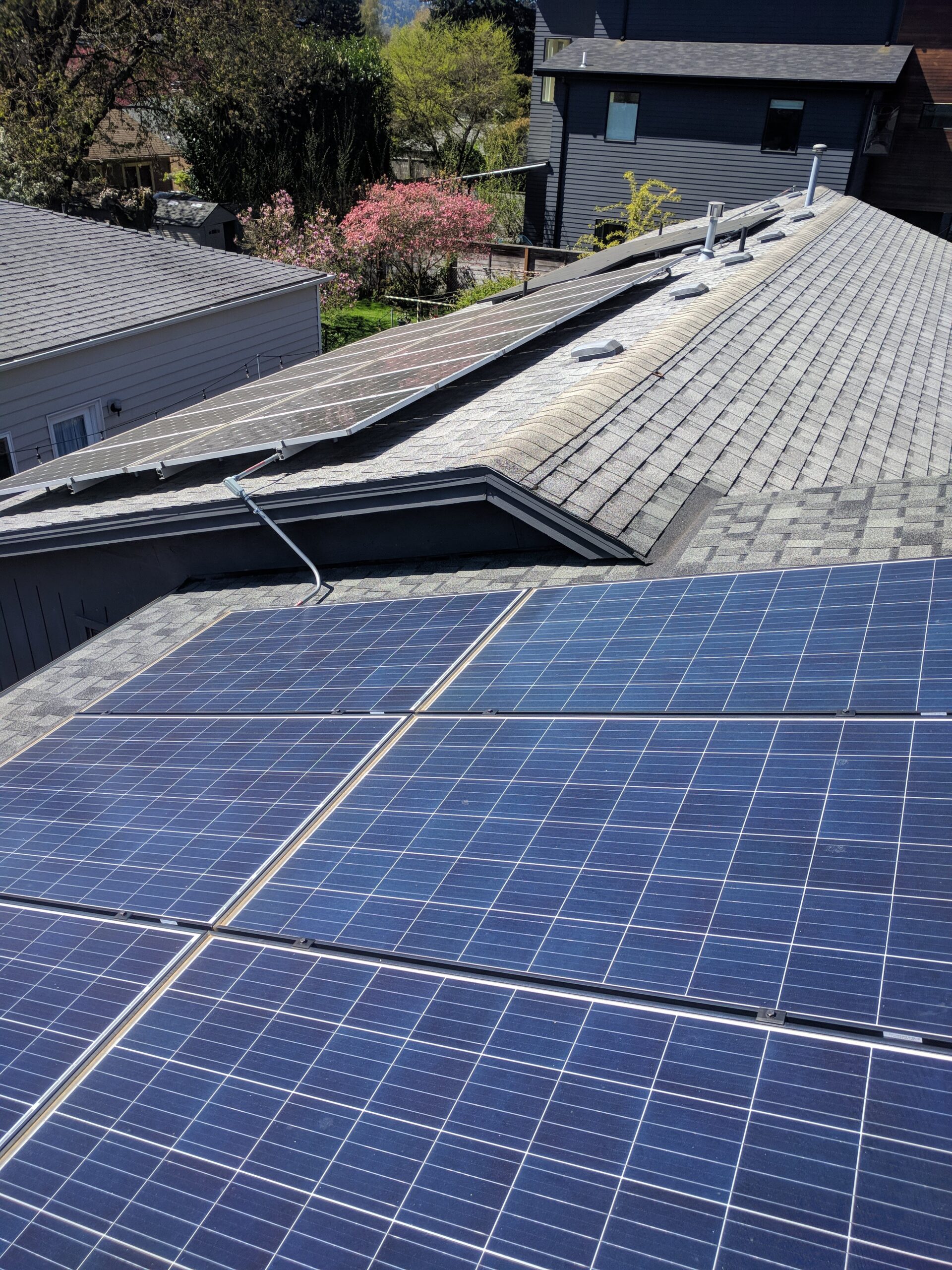Sign up for daily news updates from CleanTechnica on email. Or follow us on Google News!
If you’re like us and want to speed up the clean energy revolution, decarbonize your life, save on your electric bill, and make your home more resilient, you have a few options to run your home and vehicle on clean energy. In most cases, this means harnessing the power of the 4.6 billion-year-old star at the center of our solar system that makes life on Earth possible. We love solar so much that we’ve installed it three times over the past decade and saved thousands on energy bills.
Humans have a long history harnessing the power of the sun. In the 7th century BC, Greek, Roman, and Chinese civilizations began using mirrors and magnifying glasses to light fires. Solar technology as we know it dates to 1839, when a French physicist discovered that electricity generation increased with exposure to light or radiant energy. The first solar patent was issued in 1888, and the first modern solar panels invented in 1954.
But solar has really only become a viable option for the average person in the last decade. This is due to technology improvements and reduced costs. If you’ve always thought it was out of reach for you, consider that the cost of panels has fallen from around $8 per watt in 2010 to $2 to $3 per watt today. This is still too expensive for many, but with declining costs, extension of the 30% solar tax credit, and accessible financing, solar is more affordable than ever. 8% of American homes have solar, with record growth for six years in a row. In Australia, solar is on nearly 33% of homes, and costs one third of US prices, largely due to streamlined permitting that allows any electrician to do the install.
We recently shared our experience and love of community solar, and today we’ll dig into rooftop solar, which we’ve been lucky enough to install three times on two different houses.
Turn Your Roof Into A Power Plant
For most homeowners, going solar means putting solar panels on your roof and installing inverters that convert the energy from the panels into a form that you can use in your home.
While some homes, especially those in rural areas, use solar to go off-grid and store excess power in a battery, most homes are net metered, which means all the extra electricity a home produces in the summer goes back into the grid, and the utility provides the homeowner with a credit to reduce winter electric bills. Net metering is now mandated in a majority of states (though it’s being phased out in others, like California and Illinois), and enables customers to be billed for only their “net” energy use.

Screenshot of our Portland General Electric bill from summer 2022. We produced 333 more kWh than we used, so we received credit for those kWh in winter months when our solar doesn’t produce everything we need.
The Rare Repeat Customers
Our solar story is a long one, and our most recent installers joked that they don’t usually have repeat customers. We installed solar in 2010, 2012, and 2016.
Our first install was on a townhouse that Naomi owned. When Joe moved in, he was so excited about solar that he immediately dumped his life savings into twelve 230-watt panels (today’s panels are typically over 400 watts) for its roof. We’re not sure this was the smartest move on his part, as we weren’t married yet, and he had nothing left in the bank, but he justified it as a sign of his commitment to the environment and the relationship.
The total system cost was $20,010. Joe paid $14,490, and the installer received an Energy Trust of Oregon incentive for the remaining amount. Because these were early days, we also received the 30% federal tax credit and $6,000 in state tax credits (that don’t exist anymore), which covered an incredible 75% of the total cost over a period of years. Back then, with more generous subsidies but lower performance, the investment took over 10 years to pay back. With today’s improved performance and lower costs, EnergySage finds that, on average, solar panels pay back in 8.7 years.
Two years later, we moved and weren’t in a position to put that much cash down, but our new home had a south facing roof that was perfect for solar. At that time, solar leases were all the rage, and that option ended up being the right choice for us. Through Sunrun (currently the largest solar installer in the US), we put down $6,000 (all of which we received back in state tax credits over four years) for 13 solar panels estimated to produce 3,257 kWh of energy per year. We have the option to buy the panels from SunRun at the end of the 20-year lease. Because we don’t need all the electricity our panels produce when the sun is shining, and we don’t have batteries to store it, about a third of the energy powers our all-electric home and the rest goes back to the grid and provides a credit on our utility bill.
Four years later, we built an addition, which gave us more roof space and an opportunity for more solar. We entered into another Sunrun lease, with an estimated 4,054 kWh of annual electricity because the panel efficiency increased in those four years.
Our now combined 7.2 kW solar system provides about 60% of our energy needs, and that’s for an all-electric property with regular EV charging and 6–7 people living on site. (We are a family of four and have a long-term tenant in an accessory dwelling unit as well as an addition that’s typically occupied by an exchange student or Airbnb guests).
For at least half the year, our utility bill is only about $12, which is the cost of being connected to the grid. We get credit for our excess summer production, and our bill only exceeds the $12 connection charge for several months in late winter and early spring.
All of our efficiency and electrification efforts, combined with our solar panels, mean we spend a mere $850 per year on energy. That’s one fifth the national household average and a staggering one tenth the per capita average! Our solar panels saved us a whopping $7,300 in the 11 years since we installed the first set on this house.
We also subscribe to community solar for the approximately 40% of our energy needs that aren’t met by our rooftop panels, helping us achieve our carbon-free home and transportation.
Are You Ready?
In addition to the 8% of US homeowners who have solar, a recent survey found that 39% have seriously considered solar. If this includes you, you’ll need to first determine your roof viability, which depends on: 1) the orientation of your roof — south and west facing work best, and 2) age of your roof — best practice says fewer than ten years old so that it can age with your panels. If your roof is older than 10 years, you can replace it at the same time you install solar, and many contractors offer both services. The Department of Energy lists a number of online resources to understand your roof’s solar potential.
If your roof is a good candidate, you’ll need to determine how to pay for the panels. Given the average cost of rooftop solar is currently about $20,000 after tax credits, it’s not feasible for most folks to pay with cash. But there are a few funding options:
- Outright Ownership. If you can swing it with cash, solar is a great investment with a reasonable payback period. This is the route we went for our first house. A home equity line of credit or cash out refinance could provide the cash.
- Solar Loan. Many solar companies now offer financing that requires little to no money down and potentially low interest rates with monthly payments that are offset by lower utility bills. You own the panels outright, receive the tax credits, and are responsible for maintenance.
- Solar Lease. If your state offers solar leases, sometimes called Power Purchase Agreements, a solar company could install, operate, and manage panels on your roof and take the tax credits. You commit to paying that company for the power produced by the panels. This is how we got the 28 panels on our current home.
- Bulk Purchasing and Solarize. It’s also worth checking if your area has a bulk purchasing program like Solarize through which you could get a discounted install if a bunch of neighbors are also going solar. The nonprofit Solar United Neighbors organizes solar co-op programs for households to benefit from discounted pricing with bulk purchases.
Thanks to the Inflation Reduction Act, residential solar systems are eligible for a 30% tax credit through 2032. Your state may also offer additional rebates and incentives.
To explore options, reach out to solar companies in your region. We recommend getting three bids in order to compare costs and proposed system design. A basic Google search will turn up lots of local contractors, so pay attention to reviews, and check if your state has recommended solar contractors like Energy Trust of Oregon’s Trade Ally network.
In addition to the decarbonization and financial benefits of solar, we love that our panels give us the independence of being our own energy producer. We’re more insulated from fluctuating energy costs and get the satisfaction of knowing that most of our energy is produced on our own property. Plus, rooftop solar reduces the world’s dependence on corrupt petro-states that hold so much power over the world, while fighting the climate crisis at the same time. What’s not to love? We hope you’ll join the growing movement of homeowners powering their lives with clean energy from their rooftops.

This article is part of a series called Decarbonize Your Life. With modest steps and a middle-class income, our family has dramatically reduced emissions and is sequestering what remains through a small reforestation project. Our life is better for it. If we can do it, you can too.
Have a tip for CleanTechnica? Want to advertise? Want to suggest a guest for our CleanTech Talk podcast? Contact us here.
EV Obsession Daily!
I don’t like paywalls. You don’t like paywalls. Who likes paywalls? Here at CleanTechnica, we implemented a limited paywall for a while, but it always felt wrong — and it was always tough to decide what we should put behind there. In theory, your most exclusive and best content goes behind a paywall. But then fewer people read it!! So, we’ve decided to completely nix paywalls here at CleanTechnica. But…
Thank you!
Tesla Sales in 2023, 2024, and 2030
CleanTechnica uses affiliate links. See our policy here.









